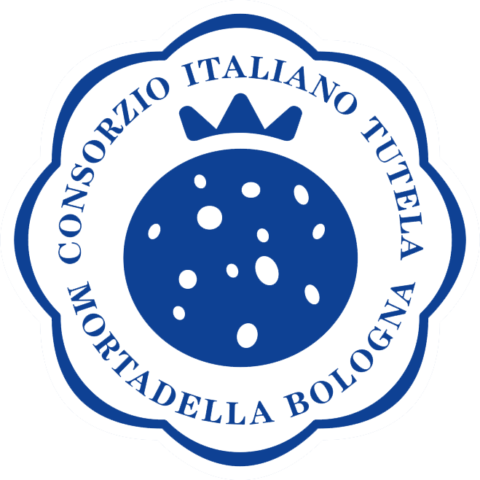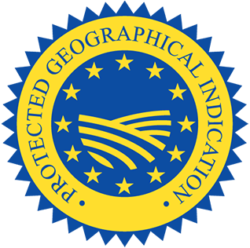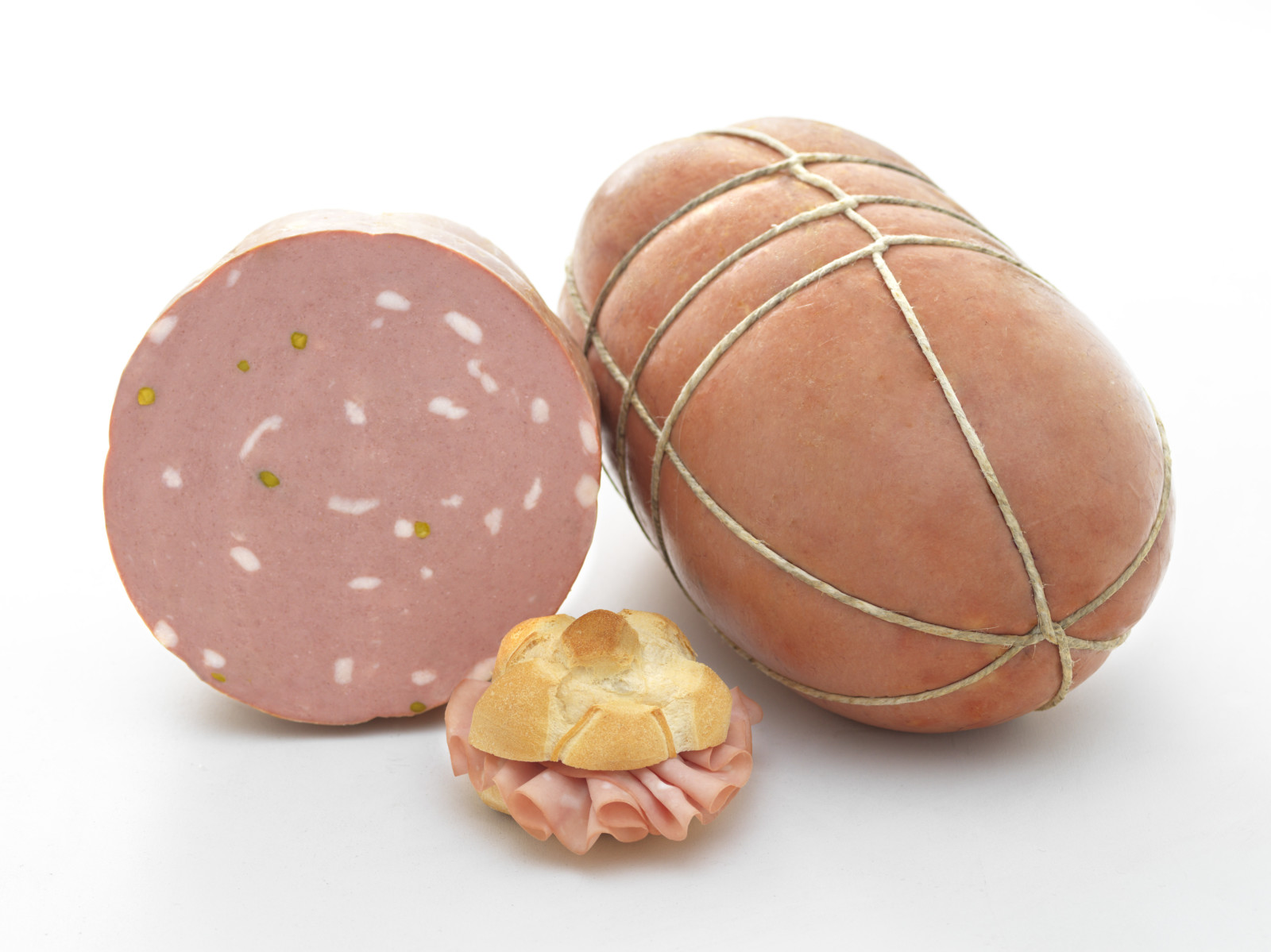
Consorzio Mortadella Bologna
Mortadella Bologna PGI


HISTORY
The name mortadella can be traced to Roman times. Some sources claim that it derives from “Mortarium” (mortar), a utensil that was used to press pork meat.
The mortar appears in a bas-relief of a funerary stone that is preserved in the archaeological museum of Bologna. Other sources deem that the word derives from “Murtada” (dripped with myrtle, a typical plant of the Mediterranean patch). The mortadella producing district was formerly under Roman influence, and stretches from Emilia Romagna to Lazio. Starting from the late Renaissance period, this product can be traced to several literary and historical sources over the ages.
In 1661 Cardinal Farnese issued a act, which encoded mortadella production, thus providing an early example of a regulation that resembles the current trademarks PDO and PGI. Warranty seals were manufactured and applied by the Corporation of Salaroli (workers who salted meat to cure it), one of the most ancient corporations in Bologna that, already in 1376, had the emblem of a mortar with the related pestle.
Starting from ’800, mortadella has recorded a growing presence in both Italian and foreign markets as a result of the flourishing early industrial pork meat processing activities, which absorbed and consolidated the recipe and tradition of this cured meat as non-renounceable heritage. The versatile nature of this product has contributed to its unwavering success over the past 2,000 years and, to date, ensures its extensive acknowledgements and excellent future prospects.
Consorzio Mortadella Bologna
Strada 4 Palazzo Q8
20089 – Rozzano (MI)
Tel: 02 8925901
Fax: 02 57510607
Mail: infom@mortadellabologna.com
Web: www.mortadellabologna.com
Product description
Mortadella Bologna is either oval or cylindrical on the outside, and must be firm with a non-elastic consistency.
The cut surface must be velvet-like, uniform and bright pink, and the slice must contain pearly white squares of adipose tissue that account for not less than 15% of the total mass. The colour is uniform and bright pink, while the fragrance is aromatic. The flavour is typical and subtle without traces of the smoking process.

Production technique
The production technique of Mortadella Bologna is absolutely particular and unique worldwide.
The process commences with carefully selected meats (processed according to the European regulation) that are minced and reduced to a creamy emulsion through three different transits in a dedicated mincing machine. Cubes of fat principally obtained from throat fat, the most precious of fats, are then prepared. The mixture thus obtained is stuffed into the gut in the amount desired (mortadella comes in all sizes, ranging from a few grams to over 2,000 kg), and then cooked.
This is the most delicate phase, which endows the mortadella with its fragrance and soft texture. The procedure envisages the use of dedicated dry air stoves with cooking times ranging from a few hours to several days. A cold water shower follows with rest in the cooling chamber for the product to “stabilise.” It is absolutely forbidden to add polyphosphates, substances with a colouring action and milk proteins, to Mortadella Bologna.
Nutritional values for 100 g
Source (INRAN, 2011)
| Protein | Lipids | Salt | Iron | Vitamin B6 | Energy |
|---|---|---|---|---|---|
| 15,7 g | 25 g | 2,4 g | 1,03 mg | 0,27 mg | 288 Kcal |